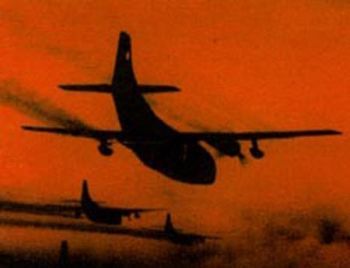
Publisher:
Bonnie King
CONTACT:
Newsroom@Salem-news.com
Advertising:
Adsales@Salem-news.com

~Truth~
~Justice~
~Peace~
TJP
May-22-2012 18:03

 TweetFollow @OregonNews
TweetFollow @OregonNews
US EPA Failing to Warn Public of Dioxin Exposure Disease Risk
Submitted by Paul Sutton for Salem-News.comThose who consume animal fats receive dioxin exposure in excess of the oral reference dose. Exposure in excess of the oral reference dose means that significant disease risk is imposed.
 Agent Orange continues to plague the world; it is a dioxin sprayed on Viet Nam's jungles during the U.S. war there. |
(WASHINGTON DC) - The US Environmental Protection Agency (EPA) recently published a document titled, “Reanalysis of Key Issues Related to Dioxin Toxicity and Response to NAS Comments”. This document is being described as part of the agency’s dioxin reassessment. EPA struggled for over twenty years to create a final document addressing dioxin exposure disease risk. Now that such a document has been published, EPA is misinterpreting the document so as to please corporate interests.
In the above named document EPA sets forth a non-carcinogenic effects oral reference dose for dioxin. The oral reference dose is 0.7 picograms dioxin TEQ/kg bw/day. Per capita dioxin exposure at current levels of food supply contamination is estimated to be approximately 0.6 picograms dioxin TEQ /kg bw/day. EPA takes the position that the food supply is safe. This position can not be defended with logic. Those who consume animal fats receive dioxin exposure in excess of the oral reference dose. Exposure in excess of the oral reference dose means that significant disease risk is imposed. The food supply is not safe. EPA is responsible for protecting the environment and the public health. EPA is responsible for warning the American public concerning the presence of unsafe levels of dioxin in the animal fat portion of the food supply. Failure to provide this warning results in avoidable harm to public health. EPA’s behavior is unethical and should be corrected.
I have sought to discuss the unreasonableness of this position with the Acting Director of the Office of Research and Development, Lek Kadeli. Mr. Kadeli has not responded.
Vietnam airport world’s most dioxin contaminated place
The Bien Hoa military airport in the southern province of Dong Nai has the world’s highest Agent Orange/dioxin contamination level, a meeting heard Thursday.
The office of the national steering committee tasked with handling the consequences of toxic chemical used by the US during the Vietnam War (Office 33) reported at the meeting that the airport has more than ten hectares of heavily polluted soil.http://www.blogger.com/
Dioxin has entered local water species and food chains, it said.
Le Ke Son, chief of the office, said it was necessary to issue urgent warnings, especially about food sources near the airport, as it is very likely that the dioxin contamination would have spread to surrounding areas.
According to Office 33, which organized the meeting to seek solutions for the airport’s contamination, at least 94,000 square meters of tainted soil have been buried at the airport.
Loyola Lactation Consultant Reacts to Report on Toxins in Breast Milk
www.newswise.com/articles/loyola-lactation-consultant-reacts-to-report-on-toxins-in-breast-milk
Source: Loyola University Health System
Newswise — When writer Florence Williams was nursing her second child, she had her breast milk analyzed for toxins. What she found surprised her. Trace amounts of pesticides, dioxin, a jet-fuel ingredient and high-to-average levels of flame retardants were present in her breast milk. She reported on these findings in New York Times Magazine, which has since set off a wave of controversy. A Loyola University Health System lactation consultant puts these findings in perspective.
“All human bodies contain toxins. This includes infants, regardless of what they are fed,” said Pam Allyn, RN, BSN, LCCE, IBCLC, lactation consultant. “The question is, which has greater risk and fewer advantages – breast milk or formula? Breast milk is still best for babies for its numerous protective benefits.”
Allyn reports that risks of formula feeding infants include an increased incidence of SIDS, hospitalization for lower-respiratory tract infections, childhood obesity, Type 2 diabetes, leukemia and asthma. Not breastfeeding also increases the risk of breast and ovarian cancer for mothers.
The World Health Organization states that the advantages of breastfeeding far outweigh the potential risks from environmental pollutants. The American Academy of Pediatricians, the American Academy of Family Physicians, the American Congress of Obstetricians and Gynecologists and the American Public Health Association also continue to recommend breastfeeding infants for at least 12 months.
“While the author expresses concern for what she found in her breast milk, she also concedes that while breast milk is food, it also is medicine,” Allyn said. “Breast milk is known to contain nutrients that cannot be duplicated by any laboratory formula, and these nutrients make children more resistant to disease and infection. That is a key point that mothers should keep in mind when they are determining if they are going to breastfeed their baby.”
Special thanks to agentorangezone.blogspot.com/
Articles for May 21, 2012 | Articles for May 22, 2012 | Articles for May 23, 2012
Quick Links
DINING
Willamette UniversityGoudy Commons Cafe
Dine on the Queen
Willamette Queen Sternwheeler
MUST SEE SALEM
Oregon Capitol ToursCapitol History Gateway
Willamette River Ride
Willamette Queen Sternwheeler
Historic Home Tours:
Deepwood Museum
The Bush House
Gaiety Hollow Garden
AUCTIONS - APPRAISALS
Auction Masters & AppraisalsCONSTRUCTION SERVICES
Roofing and ContractingSheridan, Ore.
ONLINE SHOPPING
Special Occasion DressesAdvertise with Salem-News
Contact:AdSales@Salem-News.com

googlec507860f6901db00.html



Terms of Service | Privacy Policy
All comments and messages are approved by people and self promotional links or unacceptable comments are denied.
[Return to Top]
©2025 Salem-News.com. All opinions expressed in this article are those of the author and do not necessarily reflect those of Salem-News.com.